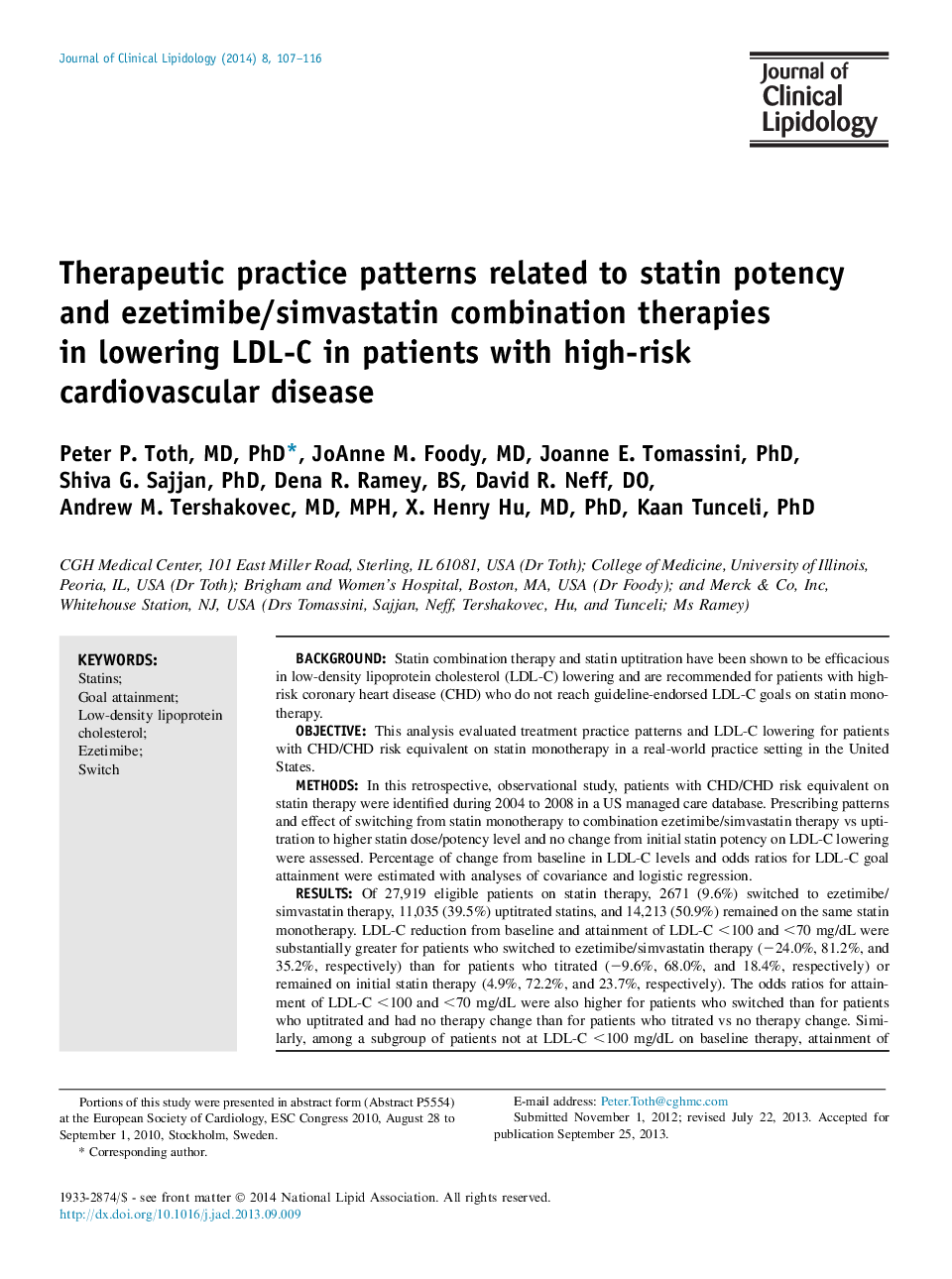| Article ID | Journal | Published Year | Pages | File Type |
|---|---|---|---|---|
| 2965854 | Journal of Clinical Lipidology | 2014 | 10 Pages |
►Treatment practice patterns were evaluated in high-risk CVD patients on statin monotherapy in a US managed-care database.►LDL-C lowering and goal attainment rates improved in patients who switched to combination ezetimibe/statin or uptitrated statins to higher doses/potency levels.►However, - 1/3 of these patients still did not attain the optional recommended LDL-C goal [<70 mg/dL]; moreover, these higher efficacy lipid-lowering therapies were infrequently prescribed.►These results highlight the need for further assessment of barriers related to this treatment gap.
BackgroundStatin combination therapy and statin uptitration have been shown to be efficacious in low-density lipoprotein cholesterol (LDL-C) lowering and are recommended for patients with high-risk coronary heart disease (CHD) who do not reach guideline-endorsed LDL-C goals on statin monotherapy.ObjectiveThis analysis evaluated treatment practice patterns and LDL-C lowering for patients with CHD/CHD risk equivalent on statin monotherapy in a real-world practice setting in the United States.MethodsIn this retrospective, observational study, patients with CHD/CHD risk equivalent on statin therapy were identified during 2004 to 2008 in a US managed care database. Prescribing patterns and effect of switching from statin monotherapy to combination ezetimibe/simvastatin therapy vs uptitration to higher statin dose/potency level and no change from initial statin potency on LDL-C lowering were assessed. Percentage of change from baseline in LDL-C levels and odds ratios for LDL-C goal attainment were estimated with analyses of covariance and logistic regression.ResultsOf 27,919 eligible patients on statin therapy, 2671 (9.6%) switched to ezetimibe/simvastatin therapy, 11,035 (39.5%) uptitrated statins, and 14,213 (50.9%) remained on the same statin monotherapy. LDL-C reduction from baseline and attainment of LDL-C <100 and <70 mg/dL were substantially greater for patients who switched to ezetimibe/simvastatin therapy (−24.0%, 81.2%, and 35.2%, respectively) than for patients who titrated (−9.6%, 68.0%, and 18.4%, respectively) or remained on initial statin therapy (4.9%, 72.2%, and 23.7%, respectively). The odds ratios for attainment of LDL-C <100 and <70 mg/dL were also higher for patients who switched than for patients who uptitrated and had no therapy change than for patients who titrated vs no therapy change. Similarly, among a subgroup of patients not at LDL-C <100 mg/dL on baseline therapy, attainment of LDL-C <100 and <70 mg/dL was greater for patients who switched than for statin uptitration vs no change, as well as for patients who uptritrated statins vs no therapy change.ConclusionIn this study, LDL-C lowering and goal attainment rates improved substantially for patients with high-risk CHD on statin monotherapy who switched to combination ezetimibe/statin or uptitrated their statin therapies; however, approximately one-third of these patients still did not attain the optional recommended LDL-C goal of <70 mg/dL. Moreover, these higher efficacy lipid-lowering therapies were infrequently prescribed, indicating the need for further assessment of barriers to LDL-C goal attainment in actual practice settings.
